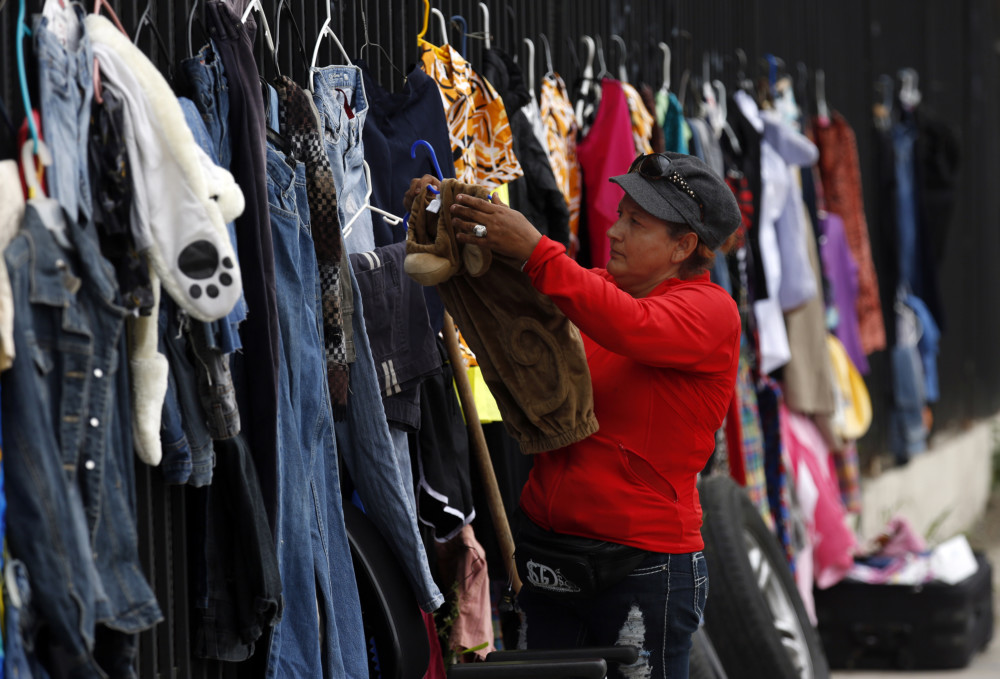EDITORIAL
Los Angeles Times
WWR Article Summary (tl;dr) The city of Los Angeles is considering a proposal to legalize street vending. However, as this editorial in the LA Times points out, the proposal in its current form has a long list of restrictions which may end up hurting the vendors not helping them.
Los Angeles
In the protracted, years-long effort to legalize street vending in Los Angeles, Mayor Eric Garcetti and City Council members have often praised sidewalk selling as the first rung on the entrepreneurial ladder and vendors as hardworking Angelenos just trying to make an honest living.
So why, then, is the City Council developing a street vending law that would let established brick-and-mortar businesses ban these wound-be entrepreneurs from the public sidewalks outside their stores, and allow council members to bar vendors from entire streets to mollify constituents?
If city leaders are serious about creating opportunities for street vendors to ply their trade legitimately, they have to create reasonable rules, not overly burdensome ones.
Right now, however, the city is considering so many layers of restrictions that legal vendors could be shut out of vast swaths of L.A. That would only hamper the effort to bring vending out of the shadows of the underground economy.
The problems with the proposal to legalize and regulate street vending start with the provision that would let property owners prohibit selling on the sidewalk fronting their land or building. It’s understandable why businesses want this capability: They worry vendors will clutter the walkways, litter the area with trash and create unfair competition for shop owners.
But the city should address those concerns by adopting clear rules for responsible vending and robustly enforcing against bad operators — not by giving business owners veto power over what happens on the sidewalk. This would be an unprecedented giveaway, allowing a private business to govern a public space. Doing so would invite extortion, as property owners could demand “rent” from vendors for their permission to sell on the sidewalk.
A better way to address potential conflicts between brick-and-mortar businesses and vendors would be to create a general rule that bars vendors from setting up shop in front of businesses with which they compete directly — barring flower vendors from plunking themselves down in front of a florist, for example. And the city ought to establish a hotline or a clear system for business owners to report scofflaw vendors and ensure there’s funding for staff to enforce the rules.
Council members are also considering giving themselves the power to create no-vending zones. Coming from a council whose members routinely create special land-use rules for favored developers, that’s an unsurprising but also unwelcome grant of authority.
Equally problematic, the council is also considering allowing businesses or residents to petition for no-vending zones. The decision to ban vending in an area has to be governed by clear citywide standards and driven by legitimate safety concerns as determined by city officials, not by anti-competitive or NIMBY motives.
The proposal does lay out citywide standards for vending, but they include a comically long list of restrictions on where vendors can set up. Among the areas that are off-limits to vending are those within five feet of driveways, bus benches, fire hydrants, crosswalks, outdoor dining areas and “any area improved with lawn, flowers, shrubs” or trees; within 10 feet of transit shelters, the rear of a parking meter, or the front of any marked spot for parallel parking; within 20 feet of historic monuments and murals, sculptures or fountains funded or managed by a city program; and anywhere that interferes with window displays, puts people in danger or impedes access to adjacent businesses.
Is there any sidewalk space left for vending?
In addition to these restrictions, the proposal would allow no more than four stationary sellers per block, two on each side of the street.
Vendors have called the limit arbitrary and unnecessary. Considered by itself, the cap seems like a reasonable compromise to ensure sidewalks aren’t overwhelmed by peddlers.
Taken together, though, the profusion of limits, restrictions, and regulations would make it extremely difficult for many of the estimated 50,000 vendors currently operating in the city to become law-abiding, permitted sellers.
Isn’t that the whole point of legalizing street vending?
L.A. has an opportunity to turn a widespread, uncontrolled industry of sidewalk selling into a controlled, regulated system that better serves all Angelenos — vendors, residents and businesses alike. The proposal in front of the council threatens to waste that chance.














































































































































































































































































































































































